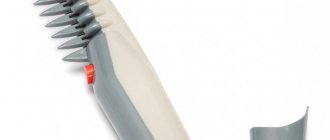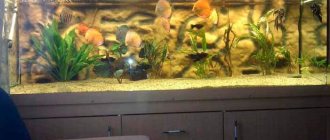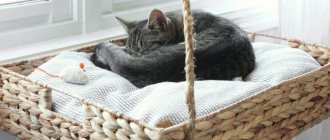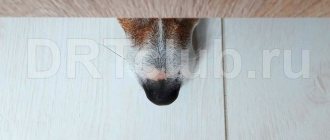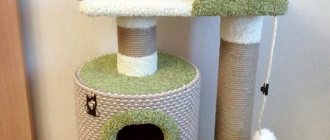Artificial ponds are becoming increasingly popular. Aquariums are evolving and provide many opportunities for creativity. When populating your own aquarium, you must understand the full responsibility of caring for it. If you have fish, naturally you need to feed them. This is not a problem at all when you can give them food on time. But what if you need to leave for several days and have no one to leave the aquarium with? An automatic feeder is a way out of this situation.
You can purchase a special automatic fish feeder; consult us about the best option.
It will feed the inhabitants at a certain interval, which you set in the settings. However, you can build a feeder yourself, and you will save a lot of money, and it will work almost the same. Let's look at several similar examples of feeders that you can make with your own hands.
What is the use of feeders?
A fish feeder is a kind of discipline.
Feeding will be associated with only one location. Thanks to this, you can improve the condition of the water in the aquarium, since the residues will settle in only one place, which allows them to be removed from the aquarium or collected by catfish. The catfish will not have to scour the entire ground in search of food; it will know exactly where to look for the treasured delicacy. The minimal distribution of food in the aquarium prevents rotting processes, which means the water stays clean longer. A feeder for live food greatly simplifies the feeding process. The fact is that particles of such food are heavier than water and quickly sink down, so slow fish or those who do not know how to feed from the bottom do not have time to fully enjoy live food. Thanks to a properly selected feeder, particles are retained in it, which will allow the fish to slowly eat all the food offered.
Operating principle of an automatic feeder
Often such devices are used in offices and other similar institutions, since on weekends and holidays it is necessary to feed the fish as usual. Timely nutrition allows pets to grow and develop healthy and active; there are some types of fish that require a special diet.
The automatic system allows you to dose feed
Automatic feeders will help ensure regular and timely feeding of the small inhabitants of the aquarium. As a rule, they are adapted for feeding already adult individuals and only with dry food. Each model of automatic fish feeder has its own mounting method and power supply system. Some types are mounted on the glass of the aquarium, while others are mounted directly on the lid.
First, it’s worth understanding the basic principle of operation of these devices. The fish feeder is designed to pour a portion of food from its body into the aquarium at a certain time. The mechanism of action for all models is the same; their differences lie in additional functions, container sizes, power supply system and the internal feed supply device itself.
Conventionally, they can be divided into 2 types:
- Electronic. This is the most convenient, reliable, but also expensive aquarium feeder. It works from the network, and thanks to the internal electronic device, a program is set that calculates the time of feed supply. At a certain time, the container opens and part of the dry food falls directly into the water.
- Rotating. The principle of this device is to move a special container filled with food, and as soon as it enters an empty compartment, it is filled with dry food. There are several varieties of this type, but the principle of operation remains the same.
Each such feeder in an aquarium with fish is equipped with a timer, thanks to which an equal period of time is set between feedings. More expensive models equipped with an electronic program allow you to set a clear time for each feeding, thanks to which the food may not be supplied at night, but only during the day.
Of course, this device still has some disadvantages:
- This type of feeder cannot be used to feed fry.
- It is intended exclusively for feeding dry food. Many fish do not accept this type of food; they are fed frozen or live food. Those who are involved in aquarium farming know that you cannot keep fish for a long time exclusively on dry rations: for their health it is necessary to receive food rich in minerals and other useful substances.
Therefore, it is possible and even necessary to use this device, but only under certain circumstances, and do not lose sight of live communication with your pets.
Purpose
All electronic units are designed for automatic feed supply. They are configured in such a way that food is supplied to the container with fish in equal portions at regular intervals.
An automatic aquarium feeder is an indispensable device for fish lovers. It should have several features:
- Be made from quality material. When food gets into it, it should not stick together.
- Provide several modes of food supply. This will allow it to be used not only for daily feeding, but also during long-term absence of owners and when raising young animals, when the fish should be fed more often.
How aquarium feeders work
Automatic feeders for aquarium fish, regardless of the device model, operate on the same principle. The essence of the action is that food is dropped into an artificial reservoir in the specified quantity, at the time set on the device timer. After the fish treats are thrown into the water, the drum rotates and the food compartment is refilled with food. The volume of food is controlled by a plate, which multiplies or decreases the weight of the portion, and the serving time is set using a control unit.
The device for serving food operates from a battery or electric current. If the owner is away from home for only a day, then it is better to choose the first type, and if he goes on business trips, then the second.
How to build a device
A do-it-yourself automatic fish feeder is made from scrap materials that are easy to find. There are two ways to build a fish feeder with your own hands.
First way:
- For the construction you will need a plastic bottle and an unnecessary telephone that receives incoming calls. The container is cut into two equal parts, then the lid is attached to the neck so that there is a gap between the neck and the cap. After this, the bottle is filled with food and a mobile phone is inserted inside.
- The principle of the device is simple - food enters the aquarium due to vibration, so you just need to call the phone and food will pour out to the fish. The amount of food is regulated by time - while the mobile vibrates, food arrives.
The second manufacturing method is more complex than the first and requires more materials. A do-it-yourself aquarium fish feeder made using this method will work autonomously, and the owner will not need to regularly “call” the pets. For construction you will need:
- Alarm clock with light weight.
- Plastic tube.
- A thick plastic glass with a lid.
How to make:
- A hole is made in the bottom of a plastic glass. The size of the hole should be slightly smaller than the diameter of the tube.
- The tube is inserted into the hole made so that the tip of the tube does not touch the wall of the glass.
- The container is filled with food and tightly closed with a lid.
- The protective glass is removed from the alarm clock, and the drum is attached to the clock hand with tape so that in 24 hours the tube is turned towards the reservoir twice with its outer tip.
The essence of the device is that the amount of food thrown into the aquarium is controlled by the size of the tube. The thicker the hole in the tube, the more food the fish will get. Before use, the device is tested for 2-3 days.
Automatic fish feeders are devices designed to make the aquarist’s life easier and prevent underwater inhabitants from starving. Devices for feeding feed can be purchased at the store, or built at home, but in the second case you need to make sure that the feeder is working properly.
Video about aquarium automatic fish feeders
Step-by-step guide for making a simple dry food machine without the use of electronics.
We will need: An old watch with a battery, a plastic jar, two round magnets, a ballpoint pen.
First you need to disassemble the watch and remove the glass of the dial.
After this, we assemble the watch without glass and carefully remove all the hands.
We cut the ballpoint pen to make a tube 1–2 centimeters long.
Sand the edges of the tube with sandpaper.
Glue one magnet to the tube with superglue and drop a few drops inside for extra strength.
The diameter of the ballpoint pen is selected experimentally; ideally, it should fit tightly onto the clockwise cylinder.
We can adjust the diameter using sandpaper.
This is how the tube with the magnet should fit into the place of the clock hand.
Glue the second magnet exactly in the center of the plastic jar.
In the jar itself, cut out a square hole 1x1 cm as shown in the figure.
Draw a 3x3 cm square on cardboard.
Cut out a cross for the container.
Tape the sides of the food container together and stick it inside the jar over the cut out hole in a clockwise direction as shown in the picture.
Pour the food into a jar, close the lid and attach it to the watch.
Now, once every 12 hours, until the battery runs out, a portion of dry food will be poured into the aquarium. The amount of food required for your fish is regulated experimentally - the hole in the jar can be reduced simply by gluing a strip of tape.
A small bonus for all blog visitors, a funny video:
Why do people buy automatic feeders for their aquarium pets? There are various reasons: being very busy at work, the desire to ensure that the feeding regimen is followed accurately, leaving for several days on business or traveling, etc. It would seem that the easiest option is to go to a pet store and buy one. But which feeder should you choose? Or maybe it makes sense to try to make it yourself?
Read also: What are cushions for sofas stuffed with?
Mechanism of action of the automatic feeder
In order for the device to operate, you must do the following:
- Pour food into a special container.
- If there is a program that sets the dosage of food, then set the required amount of food.
- Run the program for 1 or 2 feedings a day.
- Set a timer.
- Attach the device to the aquarium and plug it into the network. Watch the feeder review in this video:
If the device operates on batteries, you must check their working condition before use. Most aquarists recommend using rechargeable batteries; they last longer and retain their power evenly.
It is mandatory to carry out hygienic cleaning of this device.
When are automatic feeders needed?
Devices of this kind are needed by people who are constantly away from home. If the owner of the aquarium is too busy at work, constantly travels on business trips or is not at home for other reasons, then he should purchase the product. The size of the feeder in this case depends on how often it is planned to be filled with new food.
Also, automatic feeders are necessary for enthusiastic people who have several aquariums. Feeding fish can take a very long time. Having installed the devices, you just need to fill them with fresh food in time.
Automatic feeders are also useful in specialized centers, offices, and stores. If there are aquariums in the office, then feeding the fish regularly can become a problem. A special device will be very helpful in a difficult situation.
Where to buy a fish feeder
The electronic feeder is sold in pet stores, in universal online hypermarkets, and in specialized departments of supermarkets.
A large selection of models is presented on online sites, there is always a wide range and affordable prices, and customer reviews often help to make the right choice.
Stores with sales floors sell a limited number of automatic feeders, but mostly these are devices that are in demand, which means we can assume that they are more reliable. In addition, there is a salesperson on the sales floor who will advise the buyer about the operation or options of the device and give his recommendations.
A large selection of automatic feeder models is presented on online platforms
DIY options
At first glance, making an automatic feeder with your own hands is not easy. But it only seems so. If you use your imagination a little and understand the principle of supplying food at a strictly defined time, you can figure out that for this you need 2 main things: a table clock (an ordinary alarm clock) and a light box that will simultaneously play the role of a feed hopper and dispenser.
Such a box with a lid can be made, for example, from light transparent plastic. In the container (with the lid on), near one of the corners, you need to make a smooth hole through which the food will pour out.
Then the cover is removed, and a partition is glued into the body so that it separates the space with the hole from the main part. In appearance it resembles the entrance to a labyrinth when viewed from above.
A round hole is carefully cut in the center of the case to fit an improvised aft compartment onto the clock axis. Dry food is poured into the box in a vertical position to a level below the central hole.
There is a clock mechanism: it is the alarm clock itself with the glass removed. A homemade camera is placed on the hour axis and attached with thin tape to the hour hand. It is necessary to choose a position so that 2 times a day, at a certain time, the slot of the box is at the bottom.
The food will slowly fall out until the hour hand travels a certain path along the dial. All that remains is to secure the homemade automatic feeder near the edge of the aquarium lid, above the water.
How long will such a unit last?
It’s hard to say for sure, but enough time to go to the country for a couple of days or to visit friends for the weekend
It is important that the box is not very heavy, and that the batteries for the alarm clock are new. By the way, instead of a plastic box as a container for food, some home craftsmen use a large round pencil sharpener
Bottle and smartphone
You can try one more option. Very funny, but extremely simple.
A plastic bottle is cut in half and the top half of the bottle is turned over with the cork facing down. The cork must be unscrewed and attached to the neck of the bottle so that there is a small gap between it and the neck.
A little small dry food is poured into the bottle; It doesn’t matter if some small part of it spills out first. Soon this process will stop by itself. A mobile phone with the “Vibration” mode set is placed inside the bottle directly into the food.
You need to install a homemade feeder on a tripod above the water and make a call to the phone number. It begins to vibrate, and the vibration causes the food to fall out in exactly the same dose as the duration of the telephone operation.
An original solution, isn't it? Surprisingly, it works!
Naturally, each such option should be tested in field tests.
Undoubtedly, when you have to leave home often and for a long time, it is better to purchase a branded electronic automatic feeder and entrust it with the process of feeding your favorite fish. If such absences are episodic, short-lived, and you don’t want to spend money on expensive equipment, homemade devices will not leave animals without food.
Video about creating a simple automatic fish feeder using your phone:
From a bottle and a smartphone
There is another way to make your own fish feeder - this is to take an empty plastic bottle and an ordinary smartphone that no one uses. The following is done:
- the bottle is cut in half - its upper part with the cap remains;
- the lid must be screwed to the neck, but not all the way, so that a small gap remains;
- food is poured into the bottle itself (if it starts to ooze through the gap in the cork, it’s not a problem, this is only at first);
- A smartphone with a pre-installed “vibrate alert” mode is placed directly into the food;
- the bottle is firmly fixed above the aquarium;
- When a call comes to this smartphone, food will flow through the gap in the neck under the influence of vibrations.
This method may look very funny, however, it works, and the owners can independently dose the food supply to the fish while being far from home.
As you can see, leaving an aquarium with fish for several days is not a problem at all. For savvy owners, you can always find a way to make a simple feeder that will last exactly as long as needed, without requiring any expense. For those who are used to trusting professionals, there is always an excellent option that is affordable in any pet store.
Pros and cons of automatic feeders
Like any equipment for aquariums, automatic feeding also has its pros and cons.
Advantageous side:
- Eliminates the risk of forgetting or missing feedings;
- Allows you to feed your fish when you are away from home;
- Can be connected to an automatic timer for scheduled feeding;
- Some models allow you to use different types of food and alternate them;
- Many automatic fish feeders are programmed to feed multiple times per day;
- In automatic mode, the risk of overfeeding pets is reduced. This often happens when relatives or neighbors who are ignorant in fishing matters are asked to look after the animals. It's no secret that fish are insatiable beggars and no matter how much you give them, they still look with hungry eyes.
Disadvantages of feeders:
- Some models have a small capacity, but this may be enough to feed you for several days;
- It will not be possible to feed live and fresh foods, as they may spoil;
- Automatic feeding leads to laziness and neglect of the tank (yes, don't laugh), especially for a child who takes care of his aquarium and learns to be responsible;
- High quality automatic feeders are expensive.
Popular models of automatic feeders
The aquarium market is full of accessories from various brands, each of which has its own differences, advantages and disadvantages. The price of a device directly depends on the amount of electronics in it - the more, the more expensive.
We will highlight the most popular models and brands to understand the differences between them:
Eheim. A German manufacturer that produces first-class aquarium equipment, including automatic feeders. The product is equipped with two 80 ml food compartments. They work independently of each other, and therefore dry and vegetable food can be loaded into the compartments and programmed for different times. The feeder runs on AA batteries with a lifespan of 4 months;
Hagen. Also a German company that released a mini feeder. The device weighs only 140 g, and the food compartment holds 14 g. The main task of the feeder is to give food to the fry, in very small doses, twice a day at the appointed hour. Hagen is powered by 2 batteries;
Juwel. Once again, the German manufacturer pleases consumers with devices for convenience. The device weighs 300 g, but also runs on 2 batteries. It is programmed to dispense portions of food twice a day. Does not require special care and maintenance, simple and easy to operate;
Ferplast chef. The device is of Italian origin. Even though the power comes from two batteries, they last for an incredibly long time. The feeder very accurately doses food, dispensing it three times a day;
Tetra. Popular German company. The feeder dispenses food up to three times, and also has a manual feeding button (so that the food falls out now). It has a compartment with a volume of 100 g, which reliably protects food from sunlight and moisture.
DIY fish feeder
If the aquarium is already running and the feeder has not yet been purchased, you can always make it yourself. For production you will need the following materials: 1. Plexiglas;2. Foam;3. Flexible rubber tube;4. Plastic.
A foam feeder can be completed in a few minutes. This is the simplest, cheapest and most reliable way. You need to take a piece of foam plastic, 1.5-2 cm thick. Having chosen the appropriate length and width, the middle is cut out of the foam so that a frame remains. To prevent the edges from crumbling, they are carefully rubbed with sandpaper. The foam feeder is ready! However, it has its drawbacks - fragility and absorption of dirt and odors.
A rubber tube fish feeder is made as follows. We take a tube with a diameter of 1-1.5 cm and securely glue the hollow ends together to make a ring. This device is much stronger, more durable, and is not afraid of moisture and dirt. Like the foam version, it is suitable for dry food.
In order to make a product for live food, you will need plexiglass or plastic. Having cut out 4 identical strips, several mm high, you need to glue them together in the shape of a frame. Plastic with holes is placed inside and secured with glue.
Do-it-yourself fish feeders are not aesthetically pleasing, and the price of a purchased product is not much higher than the cost. Therefore, aquarists resort to craftsmanship only in cases where they want to enjoy the process of handicraft on their own, or the nearest pet store is too far away to go there to buy a feeder.
Commercial samples
- Eheim Twin. Expensive automatic feeder with a volume of 160 ml. Equipped with a fan that prevents food from rotting and forming lumps under the influence of moisture. There are two compartments for different types of food. Powered by 4 AA batteries. The feeding process is completely customizable.
- Eheim Feed Air Digital Automatic. Another sample from Eheim. Digital feeder with fan and feeding fish up to 4 times a day.
- Tetra. The device will provide the fish with food up to three times a day. Food is protected from exposure to light, moisture and air. There is a convenient mount with height adjustment. The volume of the food compartment is 100 ml. Food in the form of flakes, chips and granules is suitable.
- Ferplast Chef. Battery-powered feeder with a capacity of 100 ml. Powered by two batteries, it provides three meals a day for fish with precise dosage of food.
- The drum-type device will feed your pets twice a day. Weighs 300 g, container volume – 100 ml. Used to feed small fish that consume small and medium pellets.
- The feeder runs on two batteries and holds only 14 g of small food. Suitable for feeding young fish. Serves food to the fish twice a day.
- Fish Mate Automatic Feeder. The feeder has 14 compartments for storing food. It is possible to set up automatic feed supply up to 4 times a day.
Brief overview of commercial samples
Like all other aquarium accessories, automatic feeders from various manufacturers are quite widely represented in the retail chain. They vary in size, container capacity, design and, of course, price. Moreover, the cost depends mainly on the degree of automation: the more electronics there are in the feeder, the more expensive it is.
Model Eheim TWIN
The German company Eheim produces expensive, luxury equipment for aquariums, and the samples of automatic fish feeders presented by this company are no exception.
Has 2 feed compartments with a total capacity of 160 ml. Each compartment operates independently, serving different types of food at different times. However, you can program the feeding process in any way you like.
The model is powered by 4 AA batteries, which are included in the delivery set; their resource is enough for about 4 months of work. Of course, the price of Eheim TWIN is not small - about 7 thousand rubles for a 600-gram device.
Hagen
Another German company, Hagen, has taken the path of reducing the size of its equipment.
Thus, the electronic model Hagen Nutramatix weighs only 140 g, and its hopper holds much less feed - only 14 g.
This sample is well suited for feeding fry, since it can deliver doses of even the smallest dry food 2 times a day at a programmed time. The device runs on 2 batteries.
Juwel
A budget version of automatic feeders is offered by the company Juwel (Germany).
The drum-type model weighs 300 g, runs on 2 batteries, does not require labor-intensive maintenance and provides twice the feed per day.
You can install the device anywhere, the main thing is to cut a corresponding hole in the lid of the aquarium.
FERPLAST CHEF
The Italians are not lagging behind German manufacturers.
The FERPLAST CHEF automatic feeder (screw type) accurately doses food, can serve it 3 times a day, protects food from humid air and operates for quite a long time on 2 batteries.
In short, the variety of branded automatic fish feeders allows you to choose exactly the option that is needed at a given time. But you can make this device yourself.
BOTTOM FILTER FOR AQUARIUM - REVIEW DESCRIPTION PHOTO VIDEO.
Subtleties of choice
How to choose an automatic feeder? It all depends on the needs of the aquarium owner. Of course, there are basic recommendations. For example, you should not take a very cheap product of questionable quality from an unknown manufacturer. Companies that produce good products of this kind are quite well known. A poor quality feeder may break while the aquarium owner is on a business trip.
When purchasing, you should pay attention to how convenient it is to use the feeder and how it is installed. It is desirable that the product can be mounted in the far corner opposite the filtration system and compressors
It is recommended to take models with a rotating hopper that is ventilated. If air enters the hopper, the feed remains dry and fresh. Modern models of feeders also have a digital display and control unit. You can see all the data on the display. You can also choose the portion size and frequency of feeding.
We would like to thank the Nemo company for this article.
What to look for when choosing an automatic feeder
The range of automatic equipment for artificial ecosystems is large, but the manufacturer does not always take into account all the needs of the aquarist for devices. Therefore, when considering a particular model for purchase, preference is given to devices that are most suitable in terms of characteristics and functionality.
So, the choice of feeder depends on a number of options:
- automatic mechanical operation;
- volume of the mixture hopper;
- the type and types of feed that can be used;
- adjustment, frequency and speed of serving portions;
- ventilation, degree of moisture protection of the housing;
- display, control unit;
- fastening method;
- power supply.
The electronic product must be suitable for the specific type of aquarium and satisfy the nutritional needs of all its inhabitants.
The automatic feeder must be suitable for the specific type of aquarium
The number of days for which the fish will be provided with food depends on the selected program, the capacity of the compartment for the nutritional mixture and the power supply.
Sketch
Flash the controller with a sketch via Arduino IDE.
fish-fider.ino // library for working with I²C #include // library for working with a real-time clock #include "TroykaRTC.h" // library for working with servos #include // library for working with a display #include // library for working with buttons #include “TroykaButton.h” // pin with a servo drive #define SERVO_PIN 11 // pins to which the buttons are connected #define BUTTON_PIN_1 0 #define BUTTON_PIN_2 1 #define BUTTON_PIN_3 4 #define BUTTON_PIN_4 5 // blocking period for turning on food supply in ms #define TIME_BLOCK 60000 // create an object for working with the real-time clock RTC clock; // create an object to control the servo drive Servo myservo; // create an object of the QuadDisplay class and pass the pin number to CS QuadDisplay qd(10); // create an object to work with the button TroykaButton button1(BUTTON_PIN_1); TroykaButton button2(BUTTON_PIN_2); TroykaButton button3(BUTTON_PIN_3); TroykaButton button4(BUTTON_PIN_4); // variables for storing feeding time // default feeding time is “12:30” int hourAlarm = 12; int minuteAlarm = 30; // feeder state (current time / setting feeding time) bool state = true; // variable to store the current time unsigned long ms = ; void setup() { Serial.begin(9600); // initializing the display qd.begin(); // initializing the clock clock.begin(); // method for setting the time and date manually in the module // clock.set(10,25,45,27,07,2005,THURSDAY); // method for setting the time and date automatically during compilation clock.set(__TIMESTAMP__); // initialization of buttons button1.begin(); button2.begin(); button3.begin(); button4.begin(); // remember the current time ms = millis(); } void loop() { // reading data from buttons button1.read(); button2.read(); button3.read(); button4.read(); // request data from the clock clock.read(); // read the hours and minutes into variables int hour = clock.getHour(); int minute = clock.getMinute(); // if button “1” is held down for a long time if (button1.isHold()) { // change the state of the feeder state = !state; // depending on the current state of the feeder if (!state) { qd.displayDigits(QD_F, QD_O, QD_O, QD_d); } else { qd.displayDigits(QD_t, QD_I, QD_S, QD_H); } // wait a couple of seconds delay(2000); } // depending on the current operating mode of the feeder // “current time / feeding time” // if the mode is “current time” if (state) { // depending on the state of the buttons // increase / decrease the hours and minutes if (button1 .justReleased()) { Serial.println("1"); clock.setHour(hour + 1); } else if (button2.justReleased()) { Serial.println("2"); clock.setHour(hour - 1); } else if (button3.justReleased()) { Serial.println("3"); clock.setMinute(minute - 1); } else if (button4.justReleased()) { Serial.println("4"); clock.setMinute(minute + 1); } // display the time qd.displayScore(hour, minute, true); } else { // if the mode is “feeding time” // depending on the state of the buttons // increase / decrease the hours and minutes if (button1.justReleased()) { Serial.println(“5”); hourAlarm++; } else if (button2.justReleased()) { Serial.println("6"); hourAlarm—; } else if (button3.justReleased()) { Serial.println("7"); minuteAlarm—; } else if (button4.justReleased()) { Serial.println("8"); minuteAlarm++; } parsingFoodTime(); // display feeding time qd.displayScore(hourAlarm, minuteAlarm); } // if it's time to feed if (hour == hourAlarm && minute == minuteAlarm && millis() - ms > TIME_BLOCK) { Serial.println("Go Feed"); // enable food feed goFeed(); // remember the current time ms = millis(); } } // function for turning on the servo drive void goFeed() { // connect the servo drive myservo.attach(SERVO_PIN); for (int i = ; i 10; i++){ myservo.write(50); delay(200); myservo.write(80); delay(200); } } // time parsing function void parsingFoodTime() { if (hourAlarm > 23) { hourAlarm = ; } else if (hourAlarm) { hourAlarm = 23; } if (minuteAlarm > 59) { minuteAlarm = ; } else if (minuteAlarm) { minuteAlarm = 59; } }
How to choose an automatic feeder for an aquarium
Let's start with the fact that most modern models of automatic fish feeders provide for the supply of only dry food. If you are used to feeding your fish with live food or frozen minced meat, then an automatic feeder is not suitable for these purposes. However, even if until now the fish ate exclusively live food, during your absence they can easily get by with dry, granular or flake food.
To be fair, we note that the constant use of an automatic fish feeder can lead to problems with the inhabitants. The fact is that it is impossible to get all the necessary nutrients and vitamins from dry food.
Therefore, it is important to take into account that automatic feeders are intended for extreme cases when it is not possible to feed the fish yourself. When you return home, take the trouble to provide your fish with a balanced diet.
Moreover, automatic feeders are not designed for feeding fry.
As for choosing an automatic feeder, the modern market offers a huge number of manufacturers of this accessory. As a rule, all automatic feeders have the same operating technology, but differ in the presence of some additional functions. The essence of an automatic fish feeder is to use a mechanical mechanism to supply food from a special “pocket” to the aquarium at certain intervals. Of course, fish food must first be poured into the “unit” and the required time must be set.
Today, automatic feeders with a rotating hopper and a control unit are especially popular. Some automatic feeder models also have a digital display that shows the portion size program. It is possible to set two or three meals a day. The most popular models with display and power programs are from the manufacturing company Hydor.
An equally popular manufacturer of automatic fish feeders is the Eheim company. Models from this manufacturer are equipped with a rotating hopper. A fan built into the system supplies air to the hopper, which allows the feed to remain fresh and not damp. These models also have programs for selecting the feeding mode and the period of time until the next feed.
Summarizing our conversation today, we can come to the conclusion that an automatic fish feeder is an indispensable accessory for travelers who are forced to stay on long trips. However, it is not recommended to use an automatic feeder too often in order to preserve the health of the aquatic inhabitants of the aquarium. Also note that automatic feeders are only suitable for home, small aquariums and dry food.
General description of the device
Today, in pet stores, an automatic aquarium feeder is in great demand - a compact device that is autonomously capable of maintaining the functioning and life in the ecosystem.
Why do you need an automatic feeder?
This device is indispensable in the following situations:
- Absence from home – fish owners with irregular work schedules can entrust feeding their pets to automation. The device will take care of them on its own. An electronic feeder is also indispensable for those who often leave home for a long period of time, going on business trips or travel.
- Raising fry - breeding fish requires attention and responsibility from the aquarist. Feeding the brood should be done in small portions, but often. Not every owner has the opportunity to give food to teenagers every 3-4 hours, but a programmable device can handle this with ease.
- Maintaining cleanliness in the tank - due to the fact that food is supplied without excess (strictly in portions) in one place and time, the risk of contamination of the biotope is reduced. The fish get used to the regime and already gather at the feed introduction area in advance.
The automatic feeder keeps the aquarium clean. It is recommended to test a new device before leaving the house for a long time to make sure that the system does not fail.
Advantages and disadvantages of automatic feeders
Like any technology, an electronic device does not always meet all user requirements. The functionality of the device can manifest itself in different ways during operation, and at some stage it does not exclude interference in human work.
| Advantages | Flaws |
| Systematic nutrition | Feeding only dry food |
| Portion control | The mixture may become damp, spoil and cause poisoning. |
| Serving food in one place | There is a possibility that the device will become clogged, and then the fish will remain hungry |
| Ability to program time and frequency | If the program fails, too much food may enter the aquarium and the fish will die. |
| Autonomous operation up to a month | Flakes and tablets in some models need to be crushed |
There is always a risk of the device breaking down, so if you plan to be away for a long time, it is advisable to have someone periodically visit the house and check the functioning of the device.
Automatic feeder: general principle of operation
The operating principle of the device is based on portioned feed supply per unit of time. The mechanics of most modern automatic feeders are, in principle, the same: a strictly dosed portion of food is poured into the water through a hole in the drum.
After food is served, the drum rotates and its compartment is refilled from the common chamber. The capacity of the feed compartment is adjusted using a special curtain, which can be moved in one direction or another until a characteristic click is heard.
In addition to drum-type devices, there are:
Fully automated automatic feeders with feed supply during the opening of a special shutter (like curtains in old mechanical cameras).
As well as auger devices, when the dose of feed is regulated by the number of turns of the worm shaft.
There are also disk samples on sale, where food for fish is served sequentially from compartments on the disk. At a certain time, the lower disk rotates and all the food from one compartment is poured into the aquarium. Next up is the next drive bay.
But the main technological unit in all commercial automatic feeders is, of course, the electronic control unit.
Many devices can be powered by both household AC power and ordinary batteries.
Installation and operating principle
Fish feeders in the aquarium dispense food in portions. She falls asleep in the cell. From it, the food enters the compartment and is poured into the water through a special hole in the drum. After one portion has poured out, it turns and the compartment is filled with a new amount. The capacity of the compartment can be adjusted. This is done using a special curtain. It can be moved in different directions, and a characteristic click should be heard.
Attention! Most often, the device is attached using suction cups. But the installation location is important. It is necessary to choose one where the filtration and aeration system is used the least, so the loss of feed will be minimal.
LCD Display Digital Aquarium Automatic Feeder
Programmable aquarium fish feeder with LCD display. Up to 4 meals per day.
Programmable: The AquaBlue timer allows you to set up to four automatic feedings per day. You can program it to feed at any hour of the day or night and have it deliver either single, double or triple feedings. At the same time, you can also feed by hand and experience the pleasure of feeding.
Two different fixed ways: The feeder has 2 installation methods for you to choose. One is to secure the feeder to the tank wall using a holder. Another way is to stick the feeder with a double-sided sticker on the tank lid.
Moisture Prevent Design: Moisture-proof Hopper keeps fish food dry water and won't get wet or clog. It holds most types of food, including flakes, granules or crumbs.
Easy to Add Food: When adding fish at the top of the feeder, do not remove the food can, so you can easily increase or decrease the amount of food distributed. Due to the 360 degree rotation of the digital fish feeder pedestal, you can rotate it to a satisfactory position after it is installed.
Large Food Capacity: 200ml capacity, its large size holds enough food to preserve fish oil while you are away. The feed hatch door is fully adjustable, allowing you to decide how much food is distributed with each meal.
Price: 1,460.13 - 1,659.32 rubles.
The best automatic feeder for an average price – Feed-Ex FF03
Feed-Ex has been supplying certified automatic animal feeders to the Russian market for more than 10 years. The FF03 model is distinguished by rich functionality that is sometimes superior to expensive devices.
The automatic feeder works in real time and has:
- several feeding programs - constant, programmable by day from 1 to 99, forced (does not affect or cancel the settings for the subsequent introduction of the mixture);
- two options for dosing portions - from 1 to 9 in increments of 0.75 cm3 and without limiter 1.5 cm3;
- sound notification when the feeding cycle ends;
- Possibility of connecting a compressor.
The model is rich in functionality.
The model is universal and can be installed on the lid or wall of the aquarium.
The LCD display will always inform the user about the configured feeding schedule - programmed days, current feedings.
Aquarium automatic feeder
10 Reviews 35 order(s)
Product Description:
Feeding your fish while you're away is easy with the NICREW Moistrue-proof Automatic Fish Feeder. When you need to travel out of town, your fish will still feed up to 5 times a day, right on schedule. The moisture-resistant system keeps food fresh and accommodates most types of food, including flakes, granules or crumbs. You can adjust the feed lever to adjust the amount of food dispensed, and you can choose to do single, double or triple feeding each time.
Moisture Resistant System Integrated ventilation system keeps food dry and fresh. Adjustable Food Dispense You can adjust the feeding lever to regulate the amount of food, and you can choose to do one double or triple feeding each time. Easy to read LCD display. Manual and automatic feeding Press the "M" button to manually start the rotation of the container. Then, after setting up automatic feeding, you will also be able to feed them manually by pressing the "M" button whenever you want if you are worried that your fish do not have enough food. Feeds many types of food Ideal for most types of food for both freshwater and saltwater fish.
Battery Powered Two AA batteries are included, so you can install and start using the Automatic Fish Feeder right away. Tip: Take out the food container first before removing the battery compartment to insert batteries.
Easy to install Mounting Bracket fits aquariums with a top width of 0.1 to 0.8 inches.
Specifications: Material: high hardness plastic Battery: 2 * AA batteries (not included) Feeding frequency: maximum 5 feeds per day, up to 3 cycles for 1 feeding (Auto) Fish food: flakes, granules and crumbs Hopper capacity : 150 ml Product weight: 323 g Package includes: 1 * automatic fish feeding machine 1 * User manual Price: RUB 1,134.77
Pros and cons of devices
An automatic feeder is a device that will help out a person going on a business trip. If there is no one to leave the aquarium with, then it will simply become an irreplaceable thing. Automatic feeders have enough advantages:
- The devices accustom the fish to a routine. Food appears in a certain place strictly at a certain time. This is beneficial for aquatic life.
- Food that falls into one of the corners of the aquarium does not spread over the entire area and does not pollute the habitat. This allows you to change the water less often.
- It will be convenient to clean up leftover food.
- The fish will definitely have time to eat before the food sinks to the bottom. This applies to any food.
- If you have several aquariums, then you do not have to waste time on feeding. It is enough to simply fill the feed dispensing devices.
- Most models have a regulator for the amount of food dispensed.
Automatic feeders also have disadvantages. Some are related to the design features of specific models (for example, the feeder may have too small a food container). The devices have one common drawback - they only allow you to dispense one type of feed. To diversify the diet of fish, you will have to install several products.
Adviсe
- After purchasing, test the feeder for 2-3 days. Identifying faults and defects will protect the fish from overfeeding and water pollution.
- When leaving fish for too long, it is better to be on the safe side. It is safer to entrust feeding to an automatic device, the functioning of which must be monitored. Friends should visit once a week.
- Leave the friend assigned to supervise the operation of the feeder with all the necessary contact information and instruct him where to contact in case of equipment breakdown.
- Do-it-yourself devices are best preferred for short-term absences.
- If automatic feeders are used constantly, pay attention to the diet of the fish. Poor nutrition, consisting only of dry food, has a bad effect on the health of pets. You can diversify your diet with live, frozen and plant foods.
- Cone-shaped feeders are convenient for feeding live and frozen food. Such samples are inexpensive.
- Buying a fish feeder is not always necessary. For up to 7 days, purchase food that gradually dissolves in water.
- When leaving the aquarium, do not forget to also change the water, wash the filter and check other equipment.
A myth has formed around aquarium fish about their short memory. In fact, fish are smart creatures that don’t forget to eat and can remember the owner’s face. Therefore, the aquarist must remember to feed the fish and provide them with constant feeding.
Previous
AquariumCorrect installation of LED lighting for an aquarium
Next
Aquarium9 elements for decoration in an aquarium
How to make an automatic feeder for an aquarium?
The process of making an automatic feeder with your own hands is very simple and does not take much time. For work we will need the following materials:
- small analog clock with alarm;
- plastic transparent container;
- a transparent plastic tube with a diameter of about 7-8mm.
Now let's look at the instructions for making an automatic feeder for an aquarium with your own hands.
- We make a hole in a plastic container with a slightly smaller diameter than the diameter of the cutting and insert the tube. Then you won't have to use additional glue.
- The drum does not need to be fully loaded. It is enough to fill it two-thirds, then the food granules will not fall out all at once under their own weight. In addition, the clock hand can withstand a certain weight and should be loaded experimentally gradually, and we will attach the container to it.
- How does a do-it-yourself automatic fish feeder work?
- A container with food pellets is attached to the clock hand. Since the container makes two revolutions in 24 hours, granules will spill out of the hole in the tube twice a day. This is quite enough for feeding.
- The size of the hole in the tube of the self-made automatic feeder will determine the number of pellets that will fall out at a time. The larger it is, the more food will enter the aquarium.
- The automatic feeder for an aquarium with your own hands is ready and now you can safely use it in practice.
Choosing a place for the feeder in the aquarium
It is up to you to choose what you will use - an automatic fish feeder or a conventional one that requires manual manipulation. However, you should remember one rule: carefully choose the place where you will have it, preferably where there is no aeration system and heating devices. Ideally, it is advisable to turn off the aeration system during feeding so that the feed does not spread over the entire surface of the water. However, as you can imagine, if an automatic fish feeder is used, this item may not be feasible.
Feeder functions
Such designs are very useful when using live and dry food. It is they who prevent food from spreading over the entire surface of the water, ending up in hard-to-reach places where it will safely rot. In this regard, an automatic fish feeder is a real lifesaver. When using live food, the feeder is also very important. It allows you to keep heavy worms on the surface of the water, preventing them from getting lost under rocks at the bottom, where they are likely to rot.
In what cases can you not do without an automatic feeder?
A working aquarist always has to solve the problem of regularly feeding his pets. Being away from home all day, this can be quite problematic. When you go on vacation for half a month, you can’t take an aquarium with you either, so a lifesaver like an automatic feeder comes to the rescue.
Nowadays, as was done in the days of our grandparents, there is no need to “reinvent the wheel”, because given the demand for automatic feeders for aquariums, some manufacturers of pet products have adopted them. These devices have a variety of designs and are programmed for feeding hours and feed volume.
The best budget models
Inexpensive automatic feeders have the minimum functionality that is necessary to ensure that the pets are always fed in the absence of the breeder.
Homefish AF-101
An easy-to-maintain, programmed device that attaches to the glass of the aquarium and can force-feed the fish every 12 and 24 hours. Features of the model include the presence of two replaceable hoppers of different volumes: 50 and 100 ml.
Advantages:
- simple controls;
- feeds exactly on time.
This model has two replaceable hoppers of different volumes: 50 and 100 ml.
Disadvantages:
- rough dosing;
- works better with granules;
- It is difficult to remove the hopper to fill the mixture.
Resun AF-01
A small automatic feeder for installation on the wall or on the lid of the aquarium. Supplies power in the amount set by the user automatically - hourly interval 12/24 hours - and forcibly.
Advantages:
- one button control;
- miniature size.
Flaws:
- works better with medium fraction granules.
A small automatic feeder for installation on the wall or on the lid of the aquarium.
Any automatic feeder is designed not only for an aquarium with fish, the device is also suitable for feeding other underwater animals - turtles, frogs, newts.



